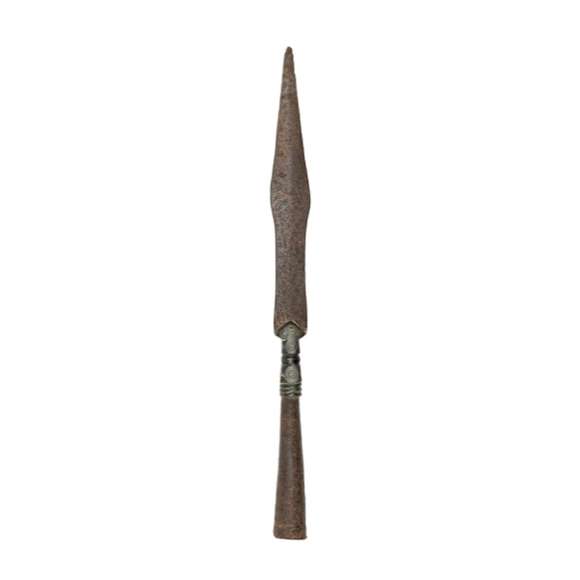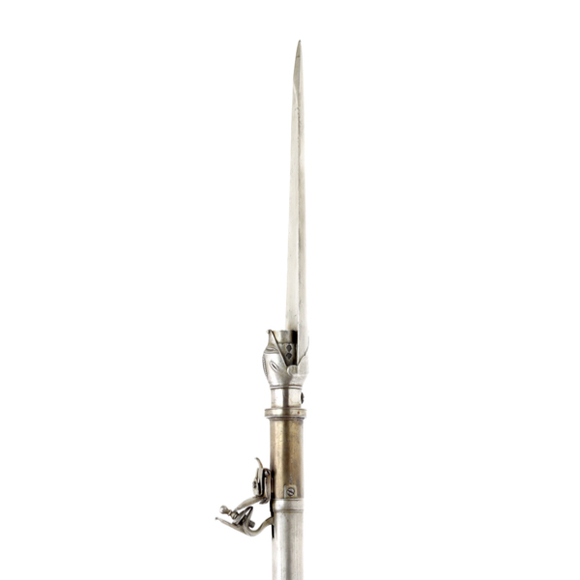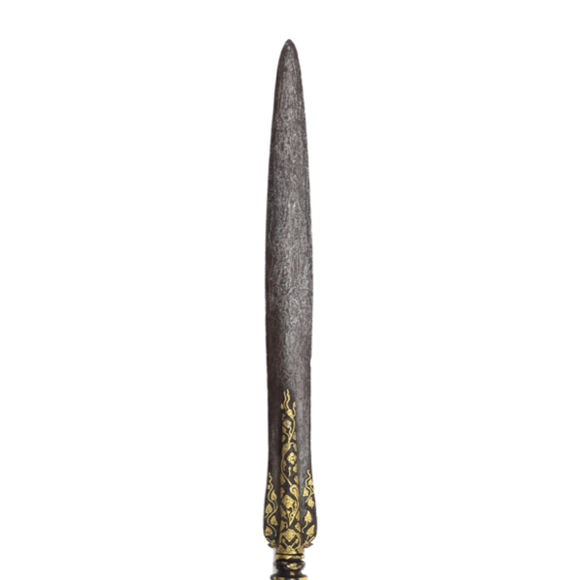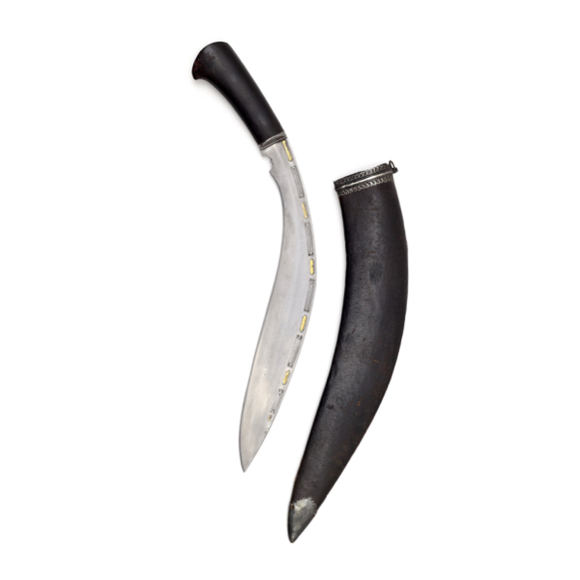Of classic shape, with a leaf-shaped blade on a socket, connected by a cast bronze base.

49.5 cm / 19.5 inch
23.3 cm / 9.2 inch
base 19 mm
ahead of face 11 mm
middle 7 mm
near tip 6 mm
ahead of face 43 mm
middle 49
near tip 29 mm
25 mm
790 grams
South India, Tanjore (Thanjavur)
Steel, copper
17th or 18th century
Description
A south Indian spearhead with a thick double-edged, symmetrical leaf-shaped blade. Both facets of the blade are ever so slightly hollow-ground. Its most striking feature is a cleverly rendered kirtimukha face at the base of the blade. Seen frontally its clearly a kīrttimukha from the front, but cover half of it and you see a kīrttimukha or makara from the side.
The kīrttimukha ("Face of Glory") is a Hindu decorative motif that features widely in art and architecture, often above temple gates. Its myth of origin features in the Hindu text Skanda Purana where it was said to have been created from Shiva's third eye. It was so fierce that it had to be given something to eat, and Shiva ordered it to eat its own body, which it did. Shiva was pleased with the result and ordered the kīrttimukha face to be depicted on all his temples. They are almost always depicted without their lower jaw. Such faces feature in Asian art from India to the Himalayan kingdoms, through Chinese, Southeast Asia, and even Japan.1
Just behind the head is a beaded rim. The long and slender socket has 12 facets, ornamental bands, and chiseled palmate decoration.
The inside of the socket is curiously lined with copper. This may have helped fit and/or adhesion to the shaft.
Comparable example
A somewhat comparable example is in the Royal Collection, accession number RCIN 37519. The records list it as being from Tanjore. Currently displayed in the Saloon Corridor of Sandringham House.
Another, also in the Royal Collection, accession number RCIN 38141, presented by Muktamabai Chhatrapati, Princess of Tanjore.
Both were presented to King Edward VII, when Prince of Wales, during his tour of India in 1875-76.
Notes to text
1. In Southeast Asia they are known as Kala, the Chinese call such faces Taotie, all are undoubtedly strongly related to one another.
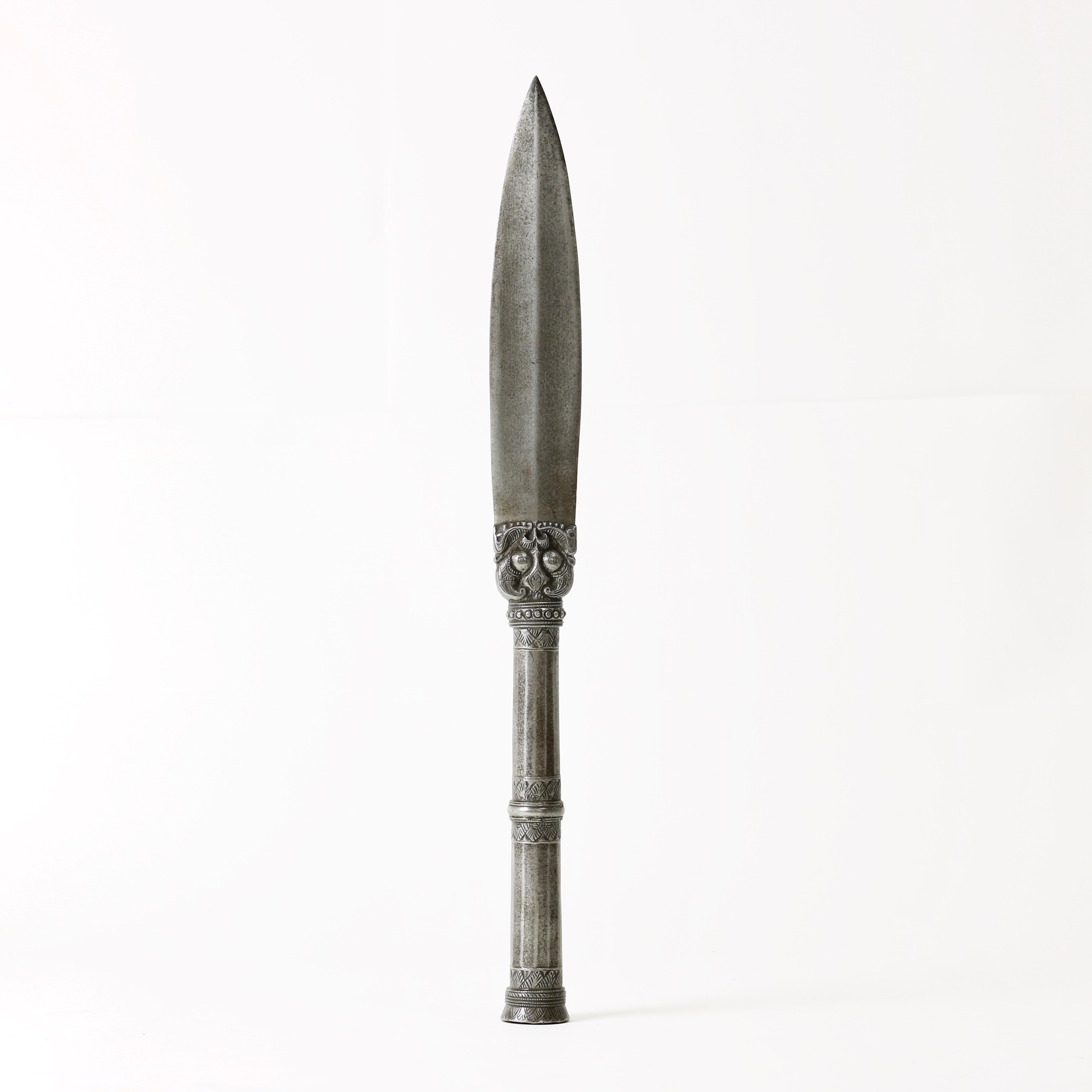
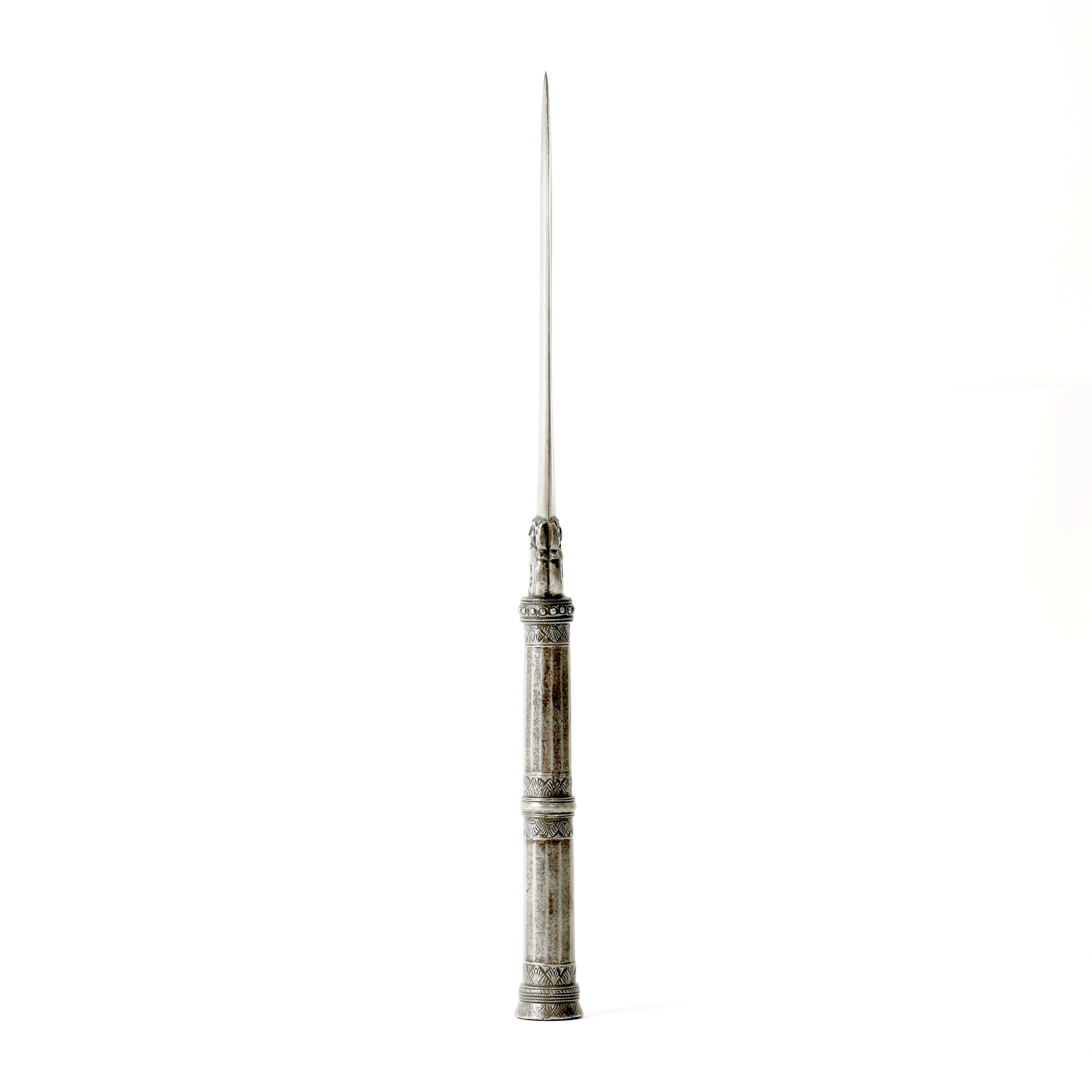
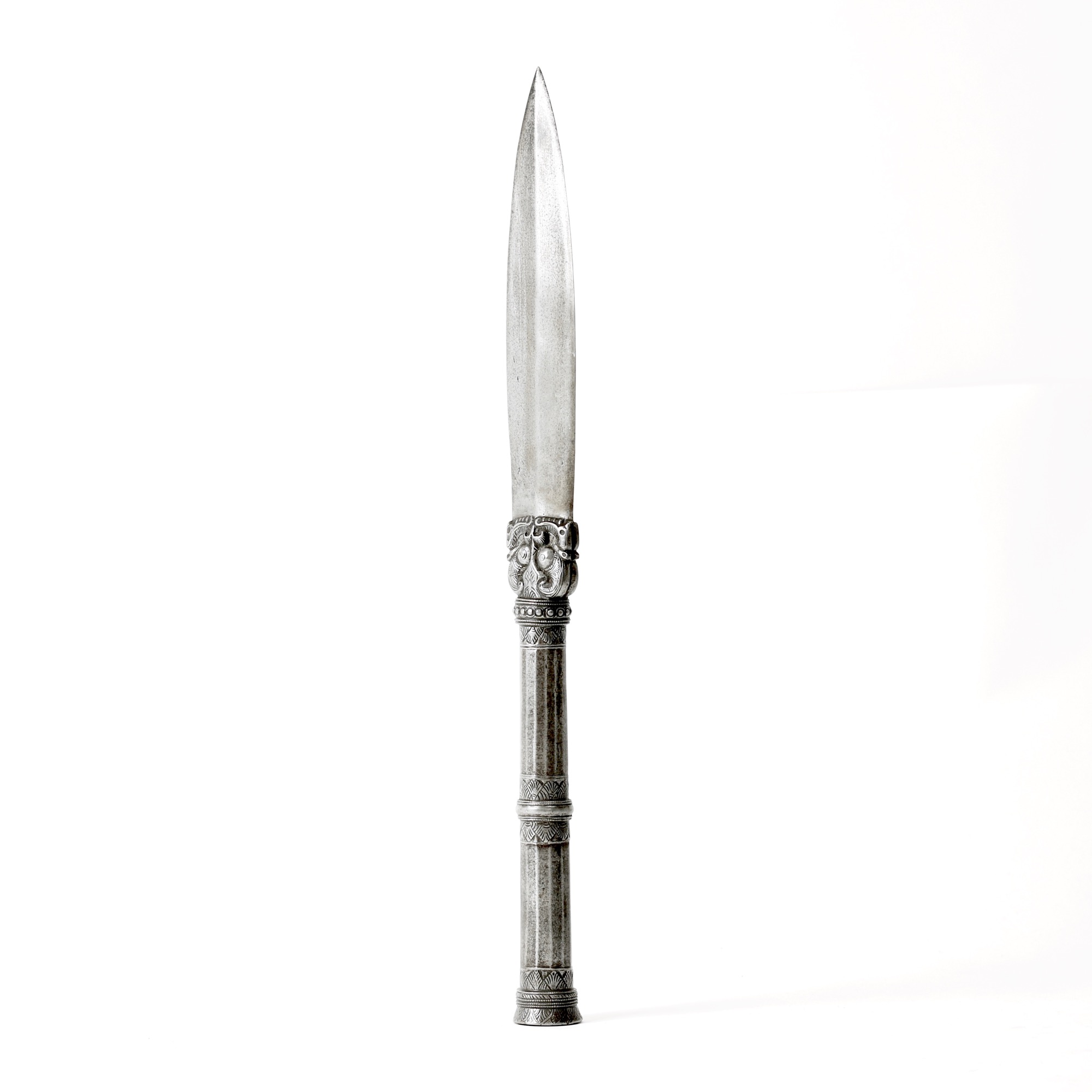
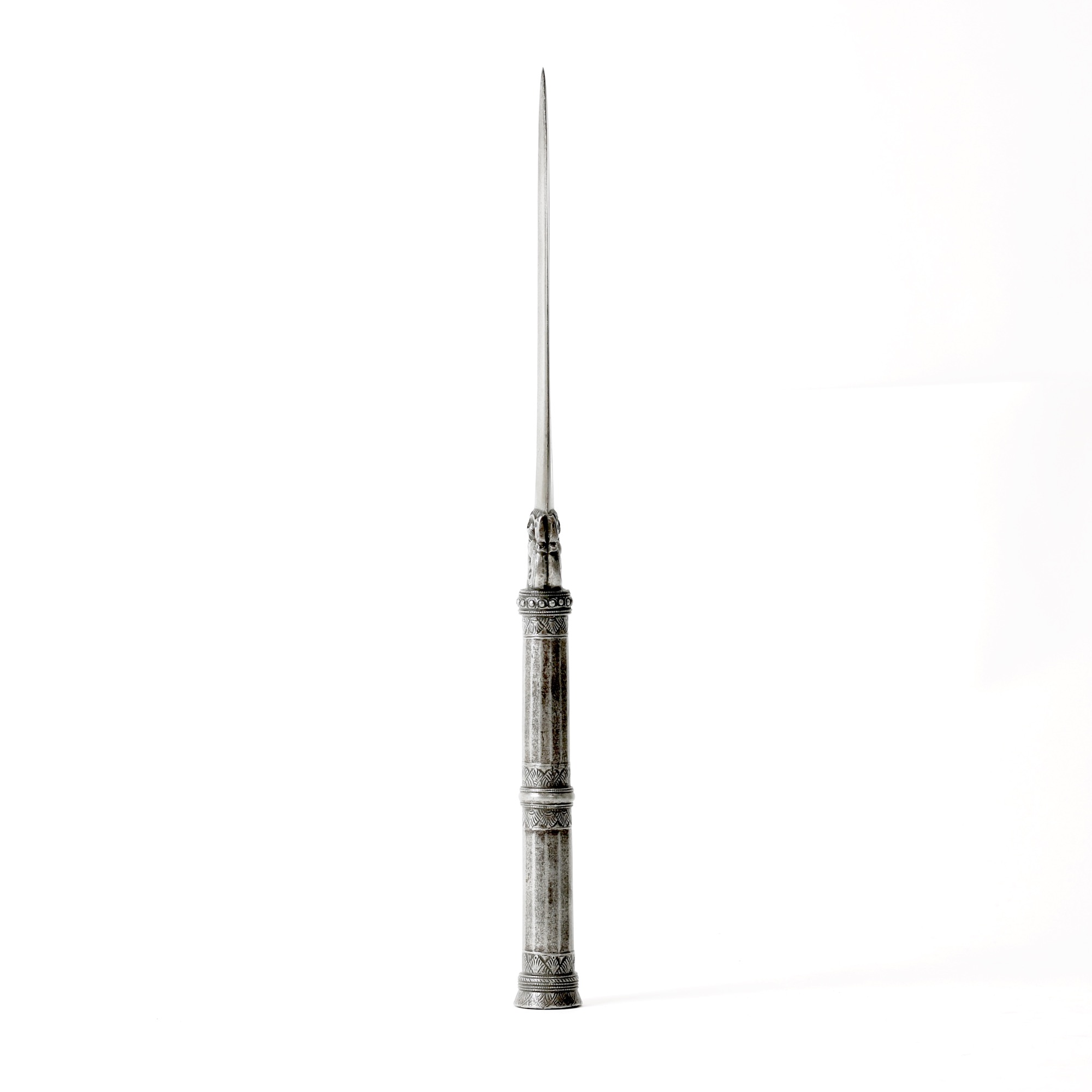
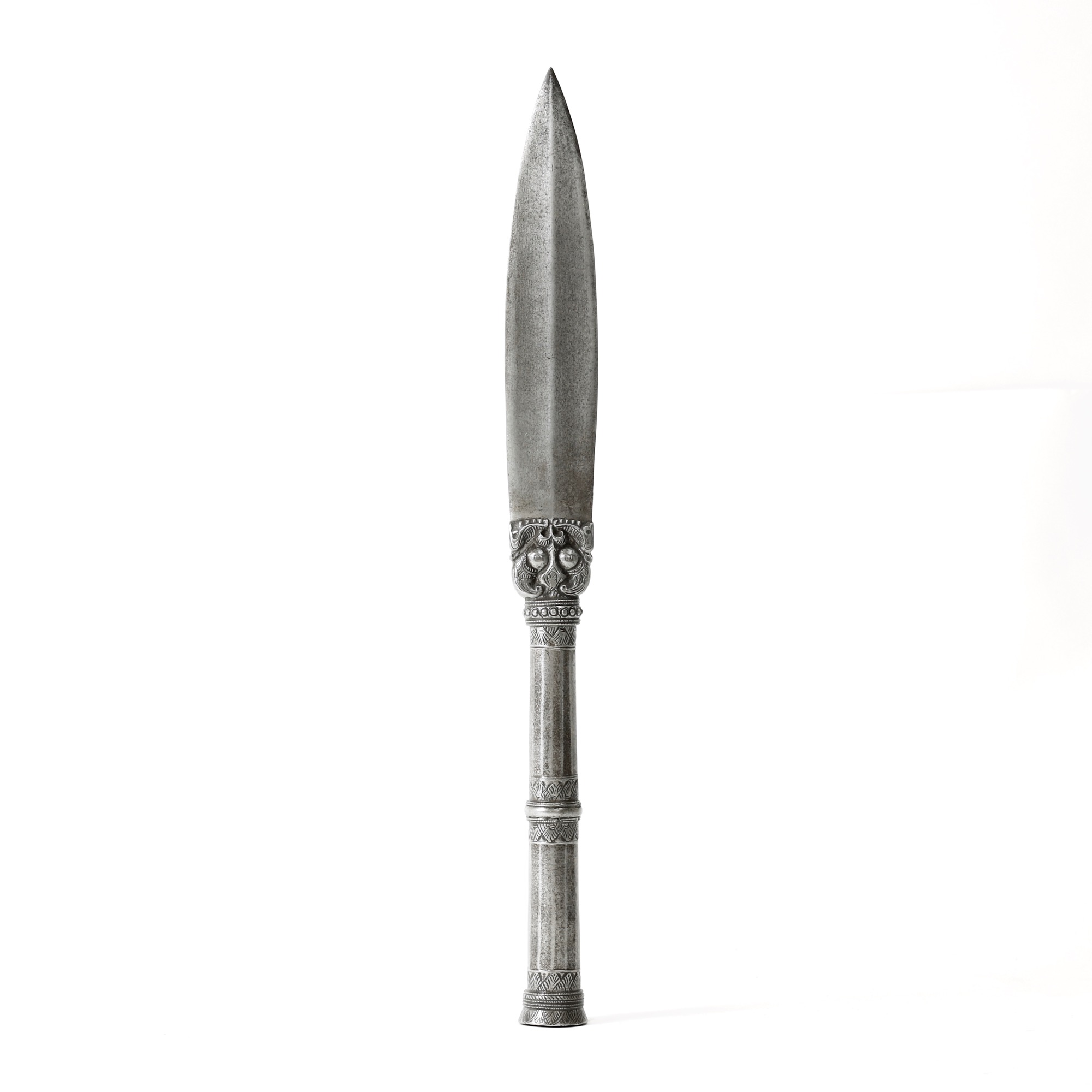


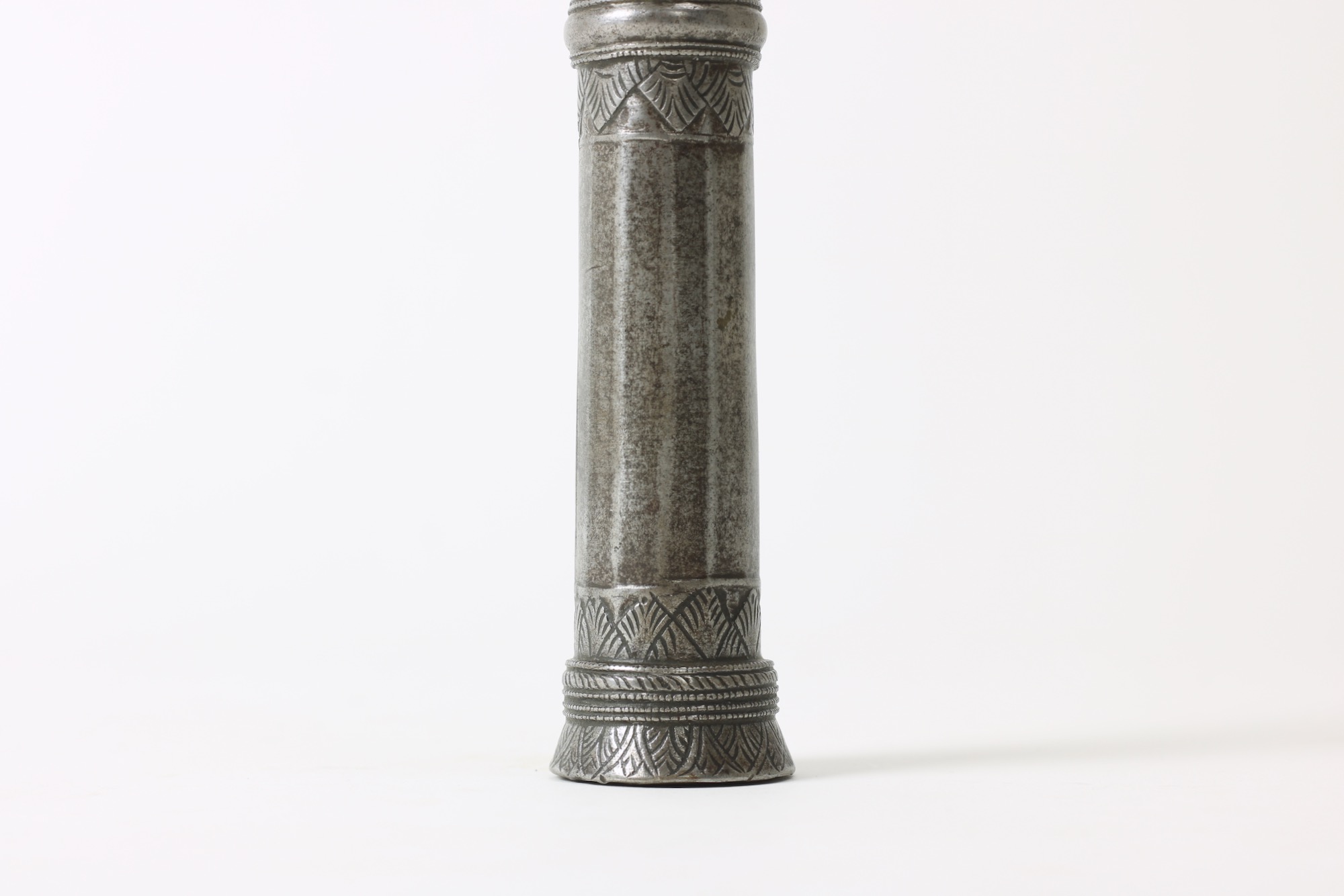
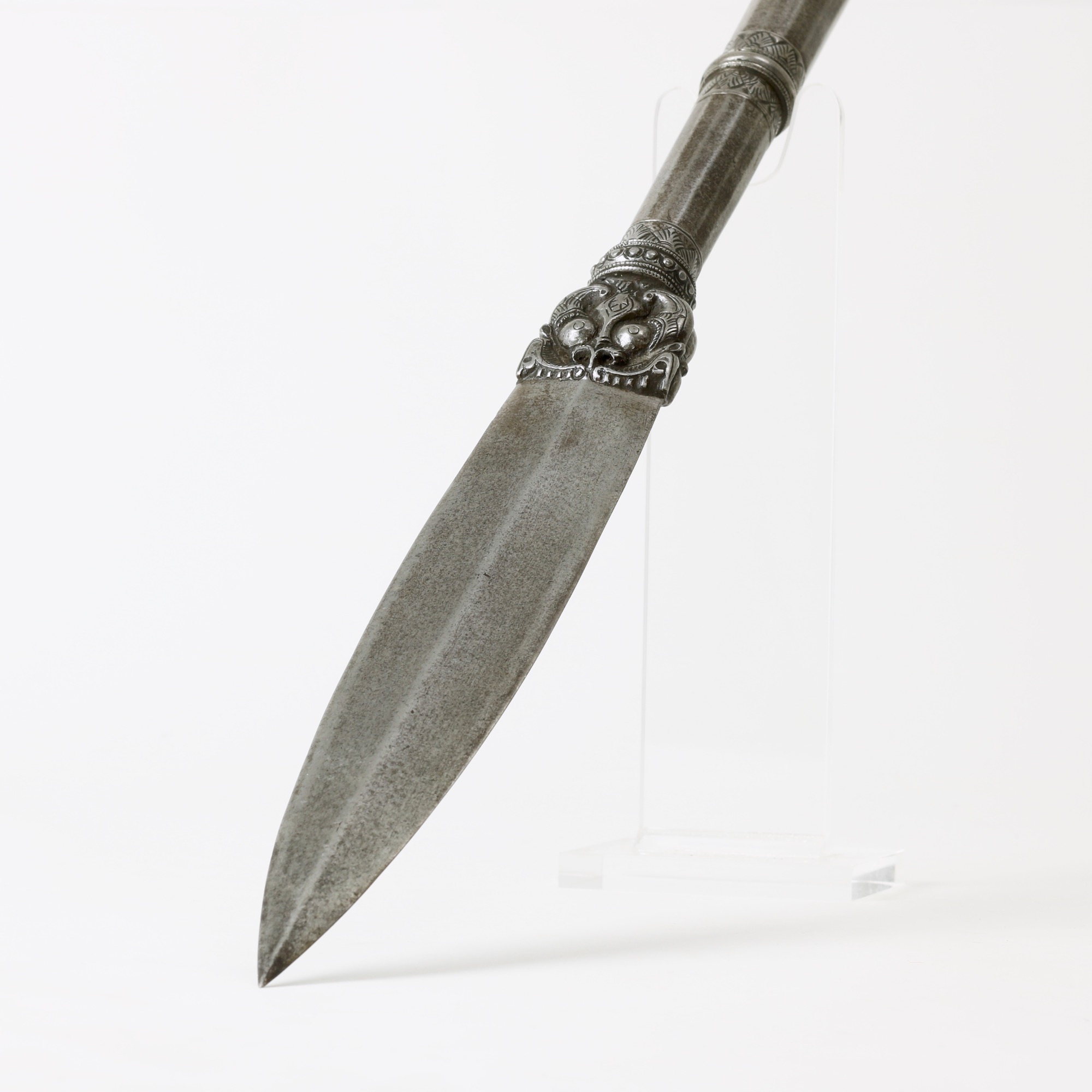
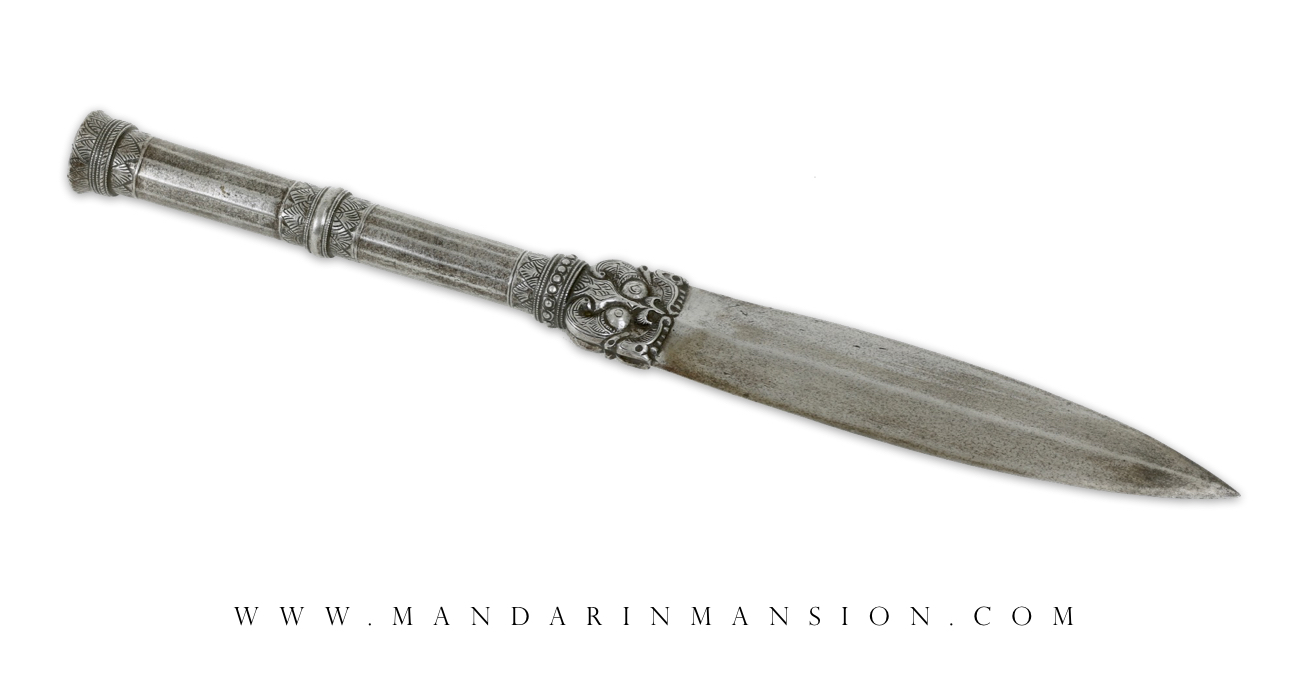
A what? Yes exactly. An extremely rare piece, the only example I am aware of in published collections at…
With a very fine Nepalese blade, but kard-like hilt and scabbard.

